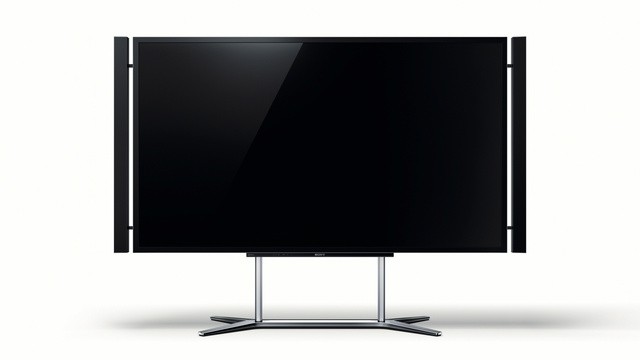New OLED and 4K TVs won’t come cheap
 One of the highlights of the IFA consumer electronics show in Berlin was the emergence of the new TV formats like OLED and 4K. But while these may be amazing and filled with innovative new technology, they are not exactly going to be affordable to the average consumer.
One of the highlights of the IFA consumer electronics show in Berlin was the emergence of the new TV formats like OLED and 4K. But while these may be amazing and filled with innovative new technology, they are not exactly going to be affordable to the average consumer.
Samsung and LG faced off with their own versions of OLED televisions while LG and Sony were both pushing 84-inch 4K TVs.
But the 55-inch OLED TVs on display ay IFA will give you hardly any change from $10,000.
And the 84-inch 4K screens will require a healthy bank balance as well.
LG’s 84-incher will be around the $15,000 mark while Sony is pitching its similar sized panel at the top end of town with reports at IFA suggesting a price tags between $25,000 and $30,000.
Not exactly aimed at the average customer looking to buy a new flatscreen TV.

But as with all new technology – it’s expensive when it’s new.
Who can remember the price of a 42-inch standard definition plasma panel in 2000? It was around the $30,000 mark and it didn’t even have a built-in TV tuner.
Prices will come down eventually but, for the moment, owning this latest technology isn’t going to be cheap.
OLED
OLED – short for Organic Light Emitting Diode – allows manufacturers to make some radical design changes because the display requires no backlight.
OLED pixels create their own light which why the panels themselves are razor thin.

LG has made a big deal about the fact its OLED panel is just 4mm thick but it should be pointed out that the actual TV part of the device – the tuner and inputs – are all in the stand of the TV.
Samsung’s Super OLED, on the other hand, has all the bells and whistles and technology within the panel itself.
As a result of this the panel is less than 1cm on the thinnest areas and gets thicker where the inputs and other technology is located within the television.
While Samsung has chosen not to focus on how supermodel thin the TV is, the company has decided it’s all about picture quality.
And as a first hand observer of the Samsung OLED I can say the picture quality had to be seen to be believed with rich colours and blacks so black the outside border is indistinguishable to the rest of the screen.

In fact when the Samsung OLED screen is completely back between scenes you’d be forgiven for thinking it had been turned off before seeing another burst of colour on the screen.
The LG 55-inch version was also quite impressive and the 4mm thickness of the actual screen was hard to ignore – that’s less than half thickness of the iPhone.
Availability of these OLED models in Australia is not quite set in concrete. Samsung is aiming for a pre-Christmas launch while LG may not release its version until 2013.
LG has decided to prioritise its 4K television and bring it to market first – before the end of 2012.
Samsung also had a 70-inch 4K television on display at IFA but there has been no clear indication when it will hit the Australian market.
4K
The name 4K comes from the fact the new TVs have almost 4000 pixels resolution across the screen or roughly four times the resolution of a regular full high definition screen.
And the reason these 4K TVs are larger – in this case 84-inch – is to comfortably fit in all of those pixels.
Samsung, LG and Sony all had 4K offerings at IFA but it was LG and Sony standing toe to toe with 84-inch models.
But the biggest problem once these ultra high definition models hit the market is the lack of 4K content which will be available.
It’s for this reason that the respective 4K TV’s main feature was the fact it could upscale full high definition content to 4K.

But what was really impressive was how native 4K content looked like on the Sony 4K model. It was absolutely stunning with an incredible amount of detail.
Sony has already puts its toe into the 4K pool with release of its 4K home theatre projector which offered the same picture quality and upscaling abilities.
On the content side it will only be a matter of time before movie studios – who already release 4K digital files to be screened on digital cinema projectors – will be able to release that same version for home viewing.
But that will only be if there is enough 4K penetration in the consumer market.
And at these prices, it may take some time.
Related Stories
Samsung showcases new TV technology with 55-inch ES9500 OLED
Samsung unveils premium 75-inch Series 9 LED Smart TV
Sony unveils 84-inch 4K Bravia TV at IFA
Sony’s 4K projector brings true cinema quality to the home







